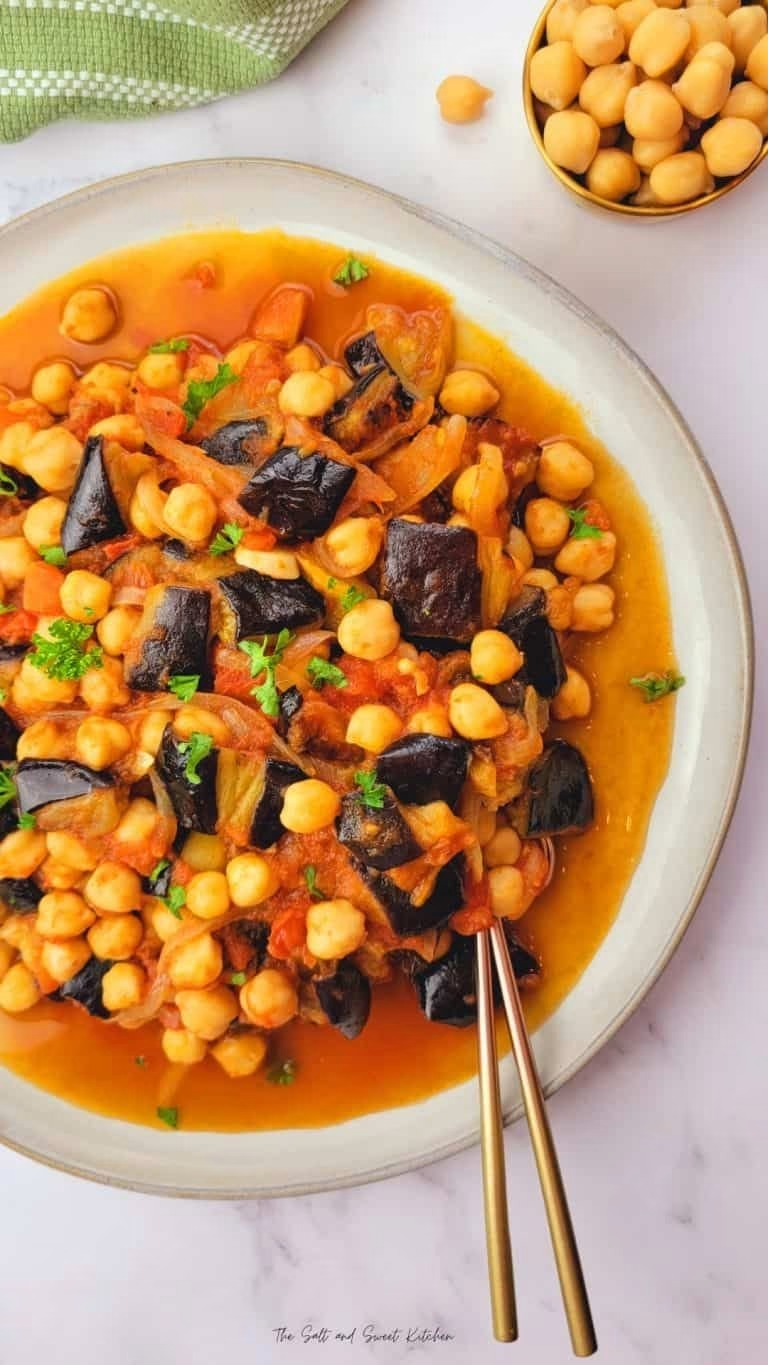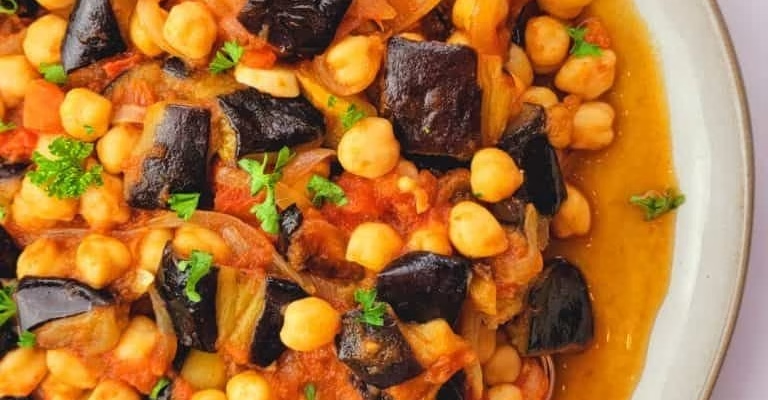
Introduction
Lebanese Eggplant Stew, known as “Moussaka,” is a delightful dish that perfectly captures the essence of Middle Eastern cuisine. This stew features tender eggplants simmered in a rich tomato sauce, flavored with aromatic spices, and often accompanied by a variety of vegetables. Originating from the vibrant Levant region, this dish has gained popularity not only in Lebanon but also in various parts of the world, thanks to its hearty nature and wholesome ingredients.
In this article, you will discover how to make Lebanese Eggplant Stew at home, explore its unique ingredients, variations, and even some cooking tips to elevate your culinary skills. Whether you’re looking for a satisfying main course or a delicious side dish, this recipe is sure to impress. Let’s dive into the fantastic world of *Lebanese Eggplant Stew ingredients* and learn how to prepare this classic dish!
Ingredients
| Ingredient | Measurement | Description |
|---|---|---|
| Eggplants | 2 medium | Fresh eggplants are the star of the dish, providing a creamy texture and absorbing all the delicious flavors. |
| Tomatoes | 4 ripe | Fresh tomatoes create a rich sauce, while their natural sweetness balances the stew’s flavors beautifully. |
| Onion | 1 large | Chopped onions add depth and sweetness to the base of the stew. |
| Garlic | 4 cloves | Fresh garlic enhances the aroma and depth of flavor in Lebanese Eggplant Stew. |
| Bell Peppers | 2 (1 red, 1 green) | Bell peppers add color and a slight crunch, contributing to the stew’s overall texture. |
| Chickpeas | 1 cup (cooked) | Chickpeas boost the protein content, making this stew more filling and nutritious. |
| Olive Oil | 3 tablespoons | High-quality olive oil provides a healthy fat source and enhances the dish’s flavors. |
| Ground Cumin | 1 teaspoon | This spice gives an earthy flavor, which is a hallmark of Lebanese cooking. |
| Salt | to taste | Adjusting the salt is essential for enhancing all the flavors in the stew. |
| Pepper | to taste | Freshly ground black pepper adds a subtle heat to balance the dish’s flavors. |
Step-by-Step Instructions
- Prepare the Ingredients: Start by washing and cutting the eggplants into 1-inch cubes. This size allows them to cook evenly and soak up the flavors in the stew. Chop the tomatoes, onions, garlic, and bell peppers, ensuring everything is ready to toss into the pot. Prep work is key in achieving that perfect *homemade Lebanese Eggplant Stew*.
- Cook the Base: In a large pot, heat the olive oil over medium heat. Add the chopped onion and sauté until it turns golden brown—about 5-7 minutes. This caramelization is essential as it forms the flavorful base of your Lebanese Eggplant Stew. Next, add garlic and sauté for another minute until aromatic.
- Add Vegetables: Toss in the prepared bell peppers and eggplants. Cook for about 10 minutes, stirring occasionally, until the eggplant starts to soften. The goal here is to infuse the veggies with that rich onion and garlic flavor.
- Stir in Tomatoes and Chickpeas: Add the chopped tomatoes and cooked chickpeas to your pot. Stir in the ground cumin, salt, and pepper. Let it all mingle together for a minute before adding a splash of water or vegetable broth if the mixture seems too thick.
- Simmer to Perfection: Cover the pot and reduce the heat to low. Allow the stew to simmer for about 30 minutes. This slow cooking transforms the ingredients, deepening the flavors of your Lebanese Eggplant Stew. Stir occasionally so nothing sticks to the bottom!
- Final Seasoning and Serve: Taste your stew and adjust the seasoning as needed. Once everything is tender and beautifully blended, serve hot! Enjoy with a side of rice or warm pita bread for the ultimate experience.
Pro Tips
- Choosing Eggplants: Opt for firm, shiny eggplants without blemishes. They should feel heavy for their size. This ensures fresh flavor in your stew.
- For Extra Flavor: Consider adding a pinch of cinnamon or allspice for a warm, aromatic twist.
- Make it Vegan: This recipe is naturally vegan! Just ensure your vegetable broth is vegetarian-friendly when using broth.
- Batch Cooking: Lebanese Eggplant Stew keeps well in the fridge for several days, making it perfect for meal prep. It also freezes beautifully!
- Garnish Options: Fresh parsley or mint sprinkled on top adds a lovely color contrast and uplift the flavors.
Nutritional Information
| Nutrient | Per Serving (1 cup) |
|---|---|
| Calories | 220 |
| Protein | 9g |
| Carbohydrates | 38g |
| Saturated Fat | 2g |
| Fiber | 10g |
| Cholesterol | 0mg |
| Sugars | 6g |
| Fat | 8g |
FAQs
What is the best way to store Lebanese Eggplant Stew?
Storing Lebanese Eggplant Stew is quite simple. Let it cool completely, then transfer it to an airtight container. It can be kept in the refrigerator for up to 5 days or in the freezer for 2-3 months.
Can Lebanese Eggplant Stew be made vegan or gluten-free?
Absolutely! This stew is already vegan, but if you use gluten-free chickpeas and ensure your broth is gluten-free, you’ve got a delicious homestyle dish for everyone.
What are the best side dishes to serve with Lebanese Eggplant Stew?
Serving this stew with a side of fluffy rice, roasted vegetables, or warm pita bread makes a perfect complement. A refreshing salad like fattoush or tabbouleh also pairs wonderfully!
How long does it take to prepare Lebanese Eggplant Stew?
Preparation and cooking combined will take about 1 hour. The chopping takes about 15-20 minutes, while the actual cooking and simmering require 40-45 minutes.
Can I freeze Lebanese Eggplant Stew for later?
Yes! This stew freezes very well. Just let it cool completely before transferring it to a freezer-safe container. When you’re ready to eat, thaw it overnight in the refrigerator and reheat on the stove.
Can I add meat to Lebanese Eggplant Stew?
Definitely! Some variations include adding ground lamb or beef for extra protein, which adds a savory depth to the stew. Just sauté the meat before adding the vegetables.
Is Lebanese Eggplant Stew spicy?
No, this dish is not traditionally spicy, but you can add red pepper flakes or chili powder for a kick if you prefer some heat.
What are some variations of Lebanese Eggplant Stew?
Aside from the classic version, you can experiment with adding other vegetables like zucchini or carrots. Some recipes even suggest incorporating lentils for additional protein and fiber.





